Some of the Chicago Cubs best and worst moves at the trade deadline

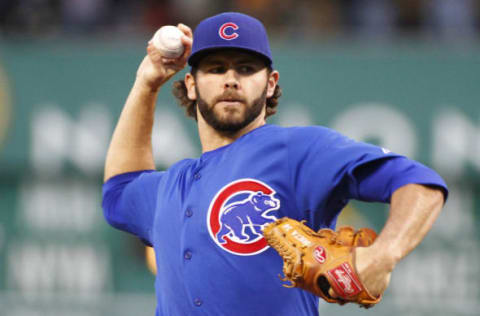
The Chicago Cubs have been known to make some big deals at the trade deadline, both good and bad. Here are some of the most memorable.
The trade deadline can be a crazy time for a lot of teams. Whether they are selling or buying the Chicago Cubs are usually always involved and they certainly have been over the years.
Depending on the situation they are in, they have to make the best decision at the time for the future of the team. If they think they are contenders, teams will often go all-in like the Cubs did in 2016 when they traded for shutdown closer Aroldis Chapman, which resulted in hoisting a World Series trophy a few months later.
Other times, when a team is not in playoff contention and they are looking to obtain assets for the future they could find themselves in sell mode. The Cubs have found themselves in this position very often. Their last selling move before winning the World Series was probably when they traded Jeff Samardzija and Jason Hammel for former Oakland Athletics top prospect Addison Russell.
All these moves can go a long way toward determining the future of a franchise. They will often hear it from the fan base and the media which can put a lot of pressure on the front office to make the right decision.
Certainly, they don’t make the right decision all the time. Buyers will go after what they believe to be the final piece of the puzzle just to come up short of a World Series ring. Sellers will trade away their top talent in search of the next top prospect just for them to be a bust.
There are always winners and there are always losers at the trade deadline. Throughout the years the Cubs have had their own share of wins and losses. Here are some of the best and worst deals they have made at the trade deadline.
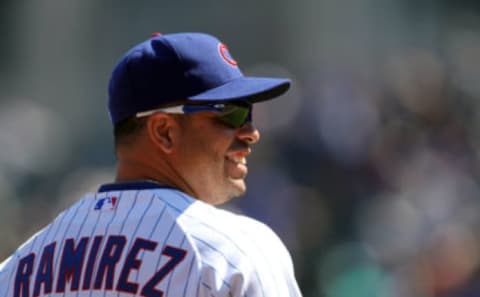
Chicago Cubs find a treasure in Aramis Ramirez
In 2003 the Cubs were right in the middle of a pennant race and found themselves buyers at the trade deadline. They needed another power bat to complement Sammy Sosa and Moises Alou as well as a bat at the top of the lineup, due to Corey Patterson’s season-ending injury.
The deal for both Aramis Ramirez and Kenny Lofton was just what the doctor ordered for the Cubs. They plugged in perfectly to the Cubs lineup and helped propel them to the playoffs.
Ramirez helped extend the Cubs lineup, batting mostly fifth in the lineup as he hit 15 home runs in the second half of the season. Lofton brought a veteran presence to the Cubs roster as he hit leadoff and started in center field for Patterson. He was a great table-setter as he hit .327 at the plate and got on base at a .381 clip.
Ultimately, the Cubs came up short in the playoffs and famously lost to the Florida Marlins in Game 7 of the NLCS. Lofton ended up walking away as a free agent at the end of the season but Ramirez’s tenure as a Cub was just getting started.
Ramirez turned into a bona-fide superstar at the hot-corner, something the Cubs had been severely lacking since the days of Ron Santo back in the 70s. Over the next nine seasons Ramirez became one of the team’s best hitters. Over that time he hit 239 home runs and drove in 806 runs while hitting .294 at the plate.
Looking back, this deal was a huge win for the Cubs. It gave the Cubs the boost they needed to win the division and get one game away from the World Series. They also found their long-term third baseman in Ramirez while giving up literally nothing.
As far as the Pittsburgh Pirates go, none of the pieces they acquired panned out. Bobby Hill had the most upside but he turned out to be a bust. Jose Hernandez was past his prime and was no longer an everyday player while Matt Bruback never even made it to the major leagues.
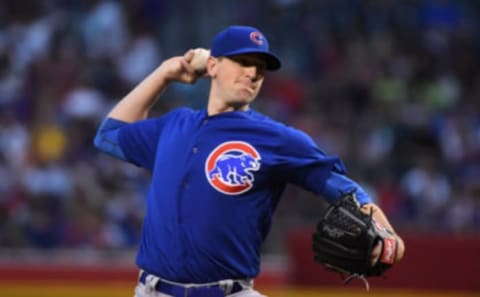
Chicago Cubs get their big game pitcher in Hendricks
At the 2012 deadline the Cubs held the top rental arm on the market in Ryan Dempster. The Cubs had a record of 43-59 and were going nowhere and had every intention of flipping Dempster for prospects.
While Dempster was set to be a free agent, he also held a trump card, as he had full veto power due to his 10-and-5 rights. He did in fact use that power that blocked a trade to the Atlanta Braves. That resulted in him being dealt to the Texas Rangers for Kyle Hendricks.
During the Cubs stretch of success, Hendricks has become an integral part of the starting rotation. In his six years he’s posted a record of 59-41 while pitching to the tune of a 3.26 ERA. He posted a career-low 2.13 ERA in 2016, where he finished third in the National League Cy Young voting.
Hendricks has gone on to pitch in some of the biggest games in Cubs history. He won Game 6 of the NLCS against the Los Angeles Dodgers that sent the Cubs to the World Series. He also started Game 7 of the World Series against the Cleveland Indians, a game he pitched exceptionally well in.
As for Dempster, he didn’t have the greatest second half with the Rangers. He made 12 starts where he posted a 5.09 ERA. The Rangers made it to the wild card game but ended up losing to the Baltimore Orioles.
Dempster walked away at the end of the season and signed with the Boston Red Sox. The right-hander would pitch just one season for the Red Sox, before deciding to hang up the cleats and retiring from baseball.
As sellers at the deadline the Cubs came out incredibly well in this deal. Flipping Dempster, an aging pitcher in the final year of his contract for Hendricks, a young, up-and-coming pitcher was truly a steal.
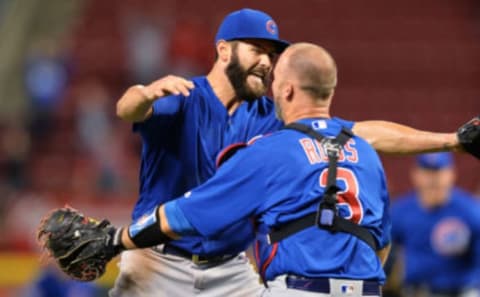
Chicago Cubs swindle the Orioles for Arrieta and Strop
For the second season in a row, the Cubs found a way to deal a pitcher having a career-year on the final year of their contract for a lopsided return. They were able to flip Scott Feldman and Steve Clevenger for Jake Arrieta and Pedro Strop and the rest is history.
Arrieta, of course, went on to become one of the most dominant pitchers in Cubs history. He won the NL Cy Young in 2015 behind one of the greatest second-half pitching performances ever, where he went 12-1 to the tune of a 0.75 ERA in 15 starts.
He was instrumental in the Cubs winning the World Series in 2016 where he went 2-0 in the seven game series. Throughout the Cubs success he made a total of nine postseason starts.
Over his five years with the Cubs, Arrieta started 128 games and won 68 of those contests. He posted a 2.73 ERA and also threw two no-hitters.
While Arrieta certainly steals most of the spotlight in this deal, Strop was a huge piece to get back. Over the last seven years, Strop has appeared in 393 games and pitched 359 innings for the Cubs. He’s posted a 2.83 ERA and is arguably one of the best relievers in Cubs history.
On the other hand, Feldman did not pitch nearly as well in Baltimore as he did in Chicago. He made 15 starts for the Orioles who failed to make the playoffs in the push for the postseason. Feldman ended up walking away at the end of the season and signing with the Houston Astros.
This trade might not just be the best deadline deal in Cubs history, but it might be the best deal in Cubs history, period. How the Cubs were able to acquire both Arrieta and Strop for the likes of Feldman and Clevenger, we may never know.
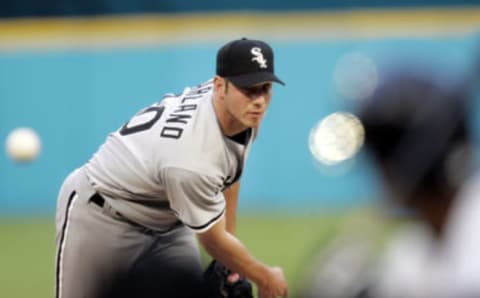
Chicago Cubs misjudged in dealing away Garland
In the midst of a playoff push in 1998, the Cubs thought they were a reliever away from putting them over the top. They decided to make a deal with the cross-town rival Chicago White Sox where they received reliever Matt Karchner and sent away starter Jon Garland.
It was simply not a good move made by the Cubs. They certainly needed a reliever but Karchner was not the answer. He had struggled early in year with the White Sox and his struggles continued on the North side.
Karchner appeared in 29 games for the Cubs but had a dismal 5.14 ERA. The Cubs would end up winning the wild card but were swept away in three games by the Atlanta Braves in the NLDS.
Karchner ended up spending three seasons with the Cubs but he never really got it together. He pitched in just 58 games total to the tune of a 4.60 ERA before his career ended in 2000.
Meanwhile, Garland went on to reliable arm in the White Sox rotation for the next eight seasons. Garland became an All-Star in 2005 where he won 18 decisions and posted a 3.50 ERA. He played a significant role for the White Sox on their way to a World Series title in 2005.
Garland was never a spectacular starting pitcher by any stretch but he was a reliable arm to have out there every fifth day. I’m sure he could have helped the Cubs during their playoff run in 2003 if they had held onto him.
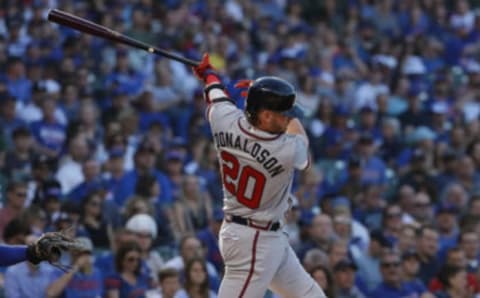
Chicago Cubs miss out on cornerstone third baseman Donaldson
In 2008 the Cubs made a big push to go for it. They had the best record in the National League and wanted to solidify their starting rotation with Rich Harden, one of the best arms on the market.
Initially, it worked and it made sense. Harden made 12 starts for the Cubs and pitched extremely well. He went 5-1 and posted a 1.77 ERA in the second half. However, the Cubs fell flat and were swept by the Dodgers in three games in the NLDS.
More from Cubbies Crib
- Cubs starting pitching has been thriving on the North Side
- Make no mistake: the Cubs are very much about power hitters
- Cubs are giving pitcher Javier Assad a deserved shot
- Cubs: It’s time to start thinking about potential September call-ups
- Cubs: P.J. Higgins deserves to be in the lineup on a daily basis
The Cubs got another year of Harden in 2009 but he wasn’t nearly as effective. He made 26 starts, going 9-9 with a 4.09 ERA. The Cubs failed to make the playoffs that year and Harden walked away at the end of the season.
So to that point, while Harden pitched relatively well, even though the Cubs didn’t win anything, the trade looked like a success. But then in 2013 Josh Donaldson played his first full season in the big leagues and he burst onto the scene.
In his first season with the A’s, Donaldson hit 24 home runs and drove in 93 RBIs while finishing fourth in the AL MVP voting. Two years later as a member of the Toronto Blue Jays, Donaldson took home the MVP when he hit a career-high 41 home runs while driving in a league-leading 123 RBIs.
Donaldson has been a three-time All-Star and has won two Silver Slugger awards over his nine-year career. Injuries have affected him and slowed him down a bit over the years but he looks to be healthy again this season, smashing 24 home runs with the Braves.
Ultimately, the Cubs didn’t end up winning anything, including this trade. Donaldson turned out to be a superstar third baseman while the Cubs failed to cash in and win anything with Harden. We’ll always have to wonder what it would have looked like if Donaldson had played the hot-corner for the Cubs.
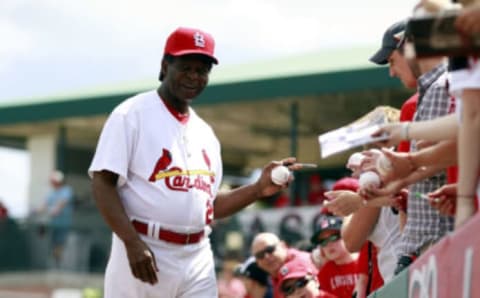
Chicago Cubs let Hall of Famer Brock get away
This last deal is not only the worst trade in Cubs history, it’s arguably the worst, most lopsided trade in all of baseball history. In 1964, the Cubs changed their franchise for the worst when they traded away future Hall of Famer Lou Brock for Ernie Brolgio. I mean, realistically it doesn’t matter who it was for, they traded away Brock.
More from Cubbies Crib
- Cubs starting pitching has been thriving on the North Side
- Make no mistake: the Cubs are very much about power hitters
- Cubs are giving pitcher Javier Assad a deserved shot
- Cubs: It’s time to start thinking about potential September call-ups
- Cubs: P.J. Higgins deserves to be in the lineup on a daily basis
To make matters worse, the Cubs traded Brock to the rival St. Louis Cardinals. The Cardinals reaped the benefits of the trade as soon as they got Brock as they won the World Series in 1964.
Brock spent the next 16 years with the Cardinals where he won two World Series titles. He was a six-time All-Star and was the MVP runner-up in 1974. He tallied 3,000 hits and led the league in stolen bases eight times. When he retired he held the record for steals with 938 and steals in one season with 118.
The Cubs gave up on him because he wasn’t much of a power hitter and they didn’t know how to utilize his speed. The Cardinals clearly understood his talents and Brock took off immediately.
Broglio caught the Cubs eye with his performance in 1963 where he won 18 games with 2.99 ERA. But he was a shell of himself with the Cubs over the next three years. He started just 33 games and won only seven contests while his ERA skyrocketed to 5.40.
Next. Chicago Cubs trade Martin Maldonado for Astros Tony Kemp. dark
Based on the player Brock turned out to be, nothing the Cubs got back could have been enough of a return. At the time, the Cubs had considered Brock a bust but he turned out to be a once in a lifetime talent. If they had held onto him I’m sure the Cubs World Series drought would have ended a pretty long time ago.